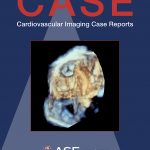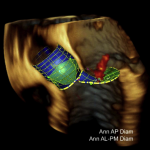The American Society of Nuclear Cardiology (ASNC) and the American Society of Echocardiography (ASE) are pleased to announce the launch of the new, improved ImageGuide Registry®. ASNC and ASE have selected ARMUS Corporation as the new registry vendor. This partnership will enable the ImageGuide Registry to expand and capitalize on new technology to support its mission of improving patient outcomes in cardiovascular imaging.
“Through this partnership with ARMUS and the re-launch of our registry, the mission of ImageGuide will be able to be fully realized through automatic data capture, outcomes connections and potential for image inclusion. ASE looks forward to leveraging this information for the benefit of patient care,” says Sherif Nagueh, MD, FASE, chair of ASE’s Registry Committee Read more here.
ImageGuideEcho is A FREE benefit for U.S.-based ASE members. Learn more here: ImageGuideEcho.org.



 National Coffee Day is September 29th but we’re celebrating all week long! Join the
National Coffee Day is September 29th but we’re celebrating all week long! Join the  Congratulations to Shiecca C. Madzima, MD, Christina A. Snider, BA, Haris Riaz, MD, and Rohit Moudgil, MD, PhD, from the Section of Clinical Cardiology, Department of Cardiovascular Medicine, Heart and Vascular Institute, Cleveland Clinic Foundation, Cleveland, Ohio for supplying the image and text for the latest CASE,
Congratulations to Shiecca C. Madzima, MD, Christina A. Snider, BA, Haris Riaz, MD, and Rohit Moudgil, MD, PhD, from the Section of Clinical Cardiology, Department of Cardiovascular Medicine, Heart and Vascular Institute, Cleveland Clinic Foundation, Cleveland, Ohio for supplying the image and text for the latest CASE,  The
The  During the month of August, one ASE member, Cassady Palmer, BS, ACS, RDCS, RDMS, FASE, was recognized for Going the Extra Mile and received a GEM award!z
During the month of August, one ASE member, Cassady Palmer, BS, ACS, RDCS, RDMS, FASE, was recognized for Going the Extra Mile and received a GEM award!z